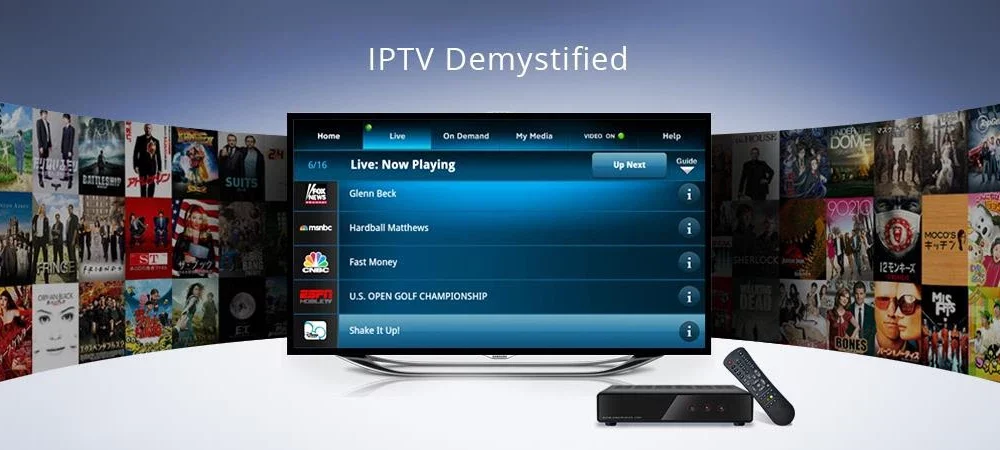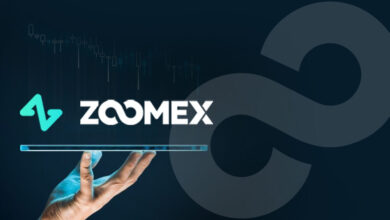Understanding IPTV: A Closer Look

IPTV (Internet Protocol Television) changes media consumption. It’s more than shows; it’s a high-tech service on networks like WANs, LANs, and private provider networks, all using IP technology for top service quality.
Unlike traditional cable or satellite services that rely on real-time broadcasts, IPTV services store much of their content on servers housed in data centres. We collaborate with data centres globally, ensuring wherever your clients or users are located, they can access content seamlessly, thanks to our high-speed servers. With over two decades of experience in the hosting business, we guarantee some of the best network connections worldwide for our IPTV clients.
History Unveiled: The Evolution of Television
The history of IPTV is tied to TV’s evolution. We’re in a new Golden Age of TV. The first was in the 1950s when TV became popular. RCA and Hollywood boosted its fame.
Television has changed a lot. Many companies made shows. In the 1980s, new executives brought new ideas, which improved TV shows. In the 2000s, things changed a lot. The Internet got faster. We got HDTV and online TV. TV streaming started.
High-speed internet is everywhere, leading to rapid growth. This explosion in content needs huge server capacity. Today, Apple, Amazon, and YouTube rule digital TV with countless channels and shows.
OTT vs. IPTV: Decoding the Differences
To understand IPTV, one must grasp the concept of IP (Internet Protocol). Every internet-connected device is assigned an IP address, facilitating data transfer across networks. IPTV, short for Internet Protocol Television, and OTT (Over the Top) services share similarities but operate differently.
OTT services deliver content over open, unmanaged networks, similar to how you stream music or browse the web. This direct internet connection can lead to varying network bandwidth and a fluctuating viewing experience. Platforms like Netflix, Amazon Prime, and YouTube fall under OTT, often requiring subscriptions.
On the other hand, IPTV operates on managed networks capable of supporting multicast streaming. This means a single video can be shared with multiple viewers on the same network simultaneously, ensuring a more stable and higher-quality viewing experience.
Unveiling IPTV’s Inner Workings
Now, let’s delve into how IPTV operates. Instead of traditional TV signals, IPTV relies on an IP network for content delivery, offering audio and video streaming to users. When you choose to watch an IPTV show, your internet connection becomes the gateway.
Clicking on a TV show link sends a request to the content source, usually servers housed in data centres. The server then compresses the video content into data packets, transmitting them via Internet Protocol (IP) to a local node in your area. From there, the signal travels to your home, often through fibre optic cables, where your device or set-top box decodes it for viewing.
Choosing the Right IPTV Setup
As an IPTV subscription provider, selecting the right server and hosting solutions is crucial for optimal performance. Choosing the wrong package can result in issues like packet loss and latency, affecting the user experience. A reliable provider should offer top-notch customer support to ensure smooth operations for your distributor network.
The Pros, Cons, and Benefits of IPTV
IPTV’s rapid adoption is evident among users opting for set-top boxes. These devices convert internet-received signals into broadcasted video on your TV screen. To access IPTV channels, users subscribe to service providers offering a myriad of packages, often with thousands of channels.
Smart TVs present another avenue for digital TV consumption, built with integrated streaming technology. However, these mostly offer OTT services like Roku, providing a simpler viewing experience but with fewer IPTV channel options.
The Future of Television and IPTV
The future of IPTV mirrors the evolution of television itself, promising immersive experiences and personalised viewing. Interactive TV content, where viewers impact the storyline, is already on the rise. Expect more innovations like gamified ads, VR, and AR experiences transforming the TV landscape.
While set-top boxes remain popular, new TV and VOD services such as Peacock, HBO Max, and Disney Plus continue to redefine the streaming landscape.
Getting Started with IPTV
Ready to embark on your IPTV journey? Set-top boxes are readily available online, including platforms like Amazon. Choose a reliable IPTV service provider offering a range of channels and features. Once set up, prepare for a new realm of TV entertainment, from live IPTV to a vast library of movies and shows.
The future of IPTV holds endless possibilities, offering a blend of traditional TV charm with cutting-edge technology. Discover the world of IPTV today and redefine your TV viewing experience.





